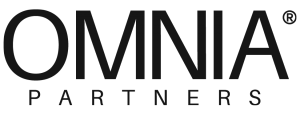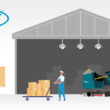7 Ways Procurement Teams Can Impact Workplace Safety All Year Long
June is National Safety Month and it’s a special time for organizations to raise awareness of the importance of safety in the workplace and their communities. According to the National Safety Council, a worker in the U.S. is injured on the job every seven seconds. Of course, providing safe environments for workers and the public is all of our jobs all year long, but procurement teams can significantly influence safety-related issues and initiatives. In this blog, Lawson Products and OMNIA Partners offer 7 proactive tips procurement officials can take to keep employees safe year-round.
Data from OSHA and the Bureau of Labor Statistics reveal that slips, trips and falls are the most common workplace injuries. While this may seem obvious, a worker is injured every seven seconds. This can cause disruptions within the workforce, such as labor shortages and an increased workload for HR departments and procurement professionals. Lawson Products, available on a cooperative contract through OMNIA Partners, lists seven educational tips procurement teams can leverage to prepare for National Safety Month and extend its impact throughout the year.
1. Review safety policies and procedures
to ensure they are up-to-date and effective. This includes reviewing vendor selection criteria, quality assurance processes and contract language related to safety.
2. Conduct a risk assessment
to identify potential safety hazards. These risks include occupational safety, emergency preparedness, occupational injuries and illnesses, industrial hygiene, sanitary facilities, meals and housing. An assessment can help inform product selection and know when to look beyond the lowest cost to consider where innovation in product options may enhance facility safety standards.
3. Collaborate with other departments
such as operation and safety to ensure a coordinated approach. Share information on safety incidents and identify risks and opportunities to limit exposure. Develop organization-wide strategies to reduce hazards and promote safety by working together.
4. Communicate safety expectations
to suppliers through procurement contracts, manuals and other channels. Help suppliers understand the importance of safety to your organization and take appropriate measures to promote it.
You should also choose suppliers who promote healthy and safe environments, keep you informed of relevant health and safety issues, exhibit safe work practices and who help you focus on proactive safety management.
5. Track safety-related metrics
such as the number of safety incidents or near-misses associated with purchased goods and services. This can isolate areas for improvement, inform future suppliers and product selection and signal a timely safety update on potential hazards. Next comes new metrics that track incident avoidance. Providing a dashboard for leadership will show how the procurement organization enhances business value through safety.
6. Provide training and education
to workers on safety issues and best practices. Your suppliers should offer complimentary toolbox talks and videos demonstrating safe and effective product use, such as PPE and chemicals. This includes site-specific meetings, such as having a supplier in for a facility meeting for product safety briefing or to introduce a tool that the team has never used.
Your team should also have online access to Safety Data Sheets and Technical Data Sheets, which are detailed resources that help ensure employees use products safely and correctly to maximize performance for tasks such as dilution ratios for chemicals and torque settings for proper fastener installation.
7. Promote safety awareness
among internal stakeholders and suppliers. Workers don’t always know they need to do something a certain way. Some employees are so efficient at their jobs that they do things automatically without thinking about hazard identification or control. Increasing awareness of potential hazards and the importance of safety through safety tips, best practices and success stories could contribute to preventing future injuries or misuse of equipment.
Overall, preparing for National Safety Month is an opportunity for procurement teams to recommit to safety and take proactive measures to reduce risks and promote a safe work environment. A good supplier will partner with you and take the time to understand the safety priorities of your organization. By working collaboratively and communicating effectively, teams can help protect the health and well-being of employees, students, customers, and the public.
Leverage the Power of Partnership
Lawson Products and OMNIA Partners are proud to offer cost-effective and efficient workplace and maintenance operations solutions to state and local government entities. By leveraging the cooperative contract, Lawson can support your organization with facility-wide safety programs or targeted safety needs, like preventing trips, slips and falls. Lawson offers a range of anti-slip coatings, floor mats, spill response kits and sorbent rolls, fall protection safety harnesses and related PPE, signage and Class A and Class B ANSI Certified first aid kits aid cabinets.
Click here to browse Lawson’s full catalog of OSHA-compliant trauma bleed and first aid kits, available on a cooperative contract through OMNIA Partners.
To learn more about how Lawson Products and OMNIA Partners can support your organization’s needs with valuable workplace safety solutions and streamline your purchasing process, click here.
About Lawson Products & OMNIA Partners
Lawson Products is a leading distributor of fleet and facility maintenance products in North America. We serve state and local governments, school districts, colleges, and universities on our competitively solicited and publicly awarded cooperative contract available through OMNIA Partners, Public Sector. Participating agencies have access to a variety of maintenance and repair products and solutions offered by Lawson Products. Not a participant of OMNIA Partners? Become one today!
Brought to you by:





















